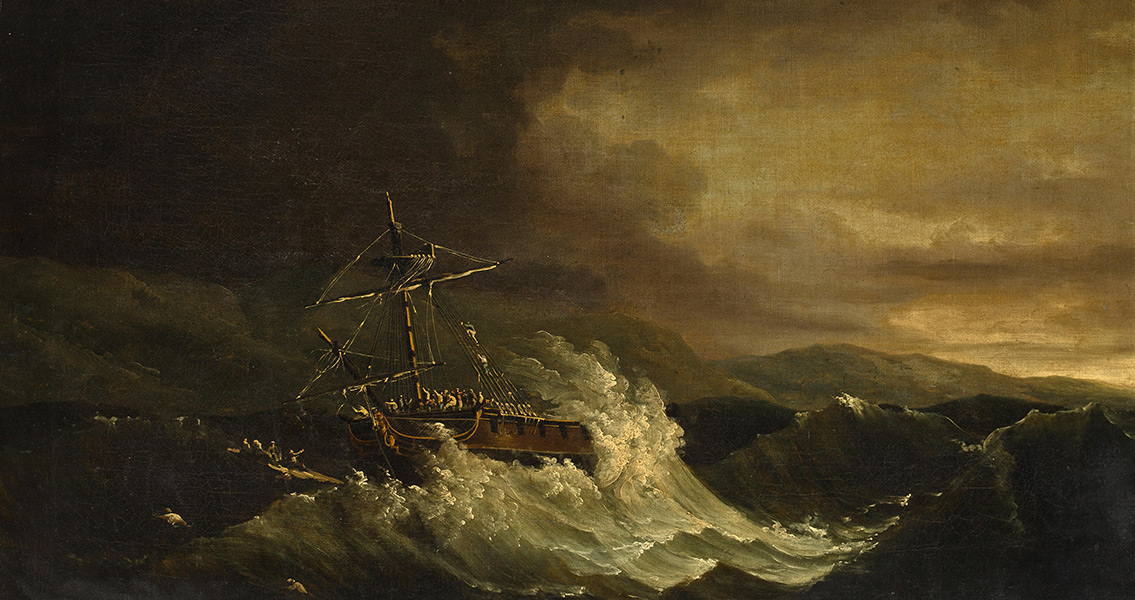<![CDATA[In October 1780, a devastating hurricane tore through the Caribbean. Known as the Great Hurricane of 1780, the storm is the deadliest Atlantic cyclone on record. Although sources vary, it is believed that between 20,000 and 22,000 people were killed as the Caribbean was battered for almost a week. Modern estimates claim that at its worst the hurricane's winds may have exceeded 321.9 km/h (200 mph). To put the storm's horrifying consequences in perspective, the next deadliest Atlantic cyclone on record was Hurricane Mitch in 1998, which left 11,000 dead in Central America. No other hurricanes have even come close to matching these shocking casualty figures. The Antilles Islands of Barbados, Martinique, and Sint Eustatius felt the brunt of the ferocious hurricane. Barbados, the western most Antilles island, was struck on 9th October 1780. The storm obliterated almost all of the houses on the island as well as uprooting trees and hurling them across the sky. From Barbados, the storm moved northwesterly through the Antilles, continuing its path of destruction. In some places whole towns were wiped off the map, while accounts describe even the sturdiest stone buildings and forts being flattened in the hurricane's wake. On Martinique, 9,000 lives were lost; on Sint Eustatius, an estimated 4,000 to 5,000 people were killed. At the time the Caribbean was dominated by the presence of European colonists and this was particularly the case in 1780, as the American War of Independence raged to the north. Both Britain and France had warships stationed in the region, ready for deployment in the conflict. The hurricane wrought heavy losses on both navies, over forty French ships were sunk, taking around 4,000 lives with them. Meanwhile, a British fleet off St. Lucia was also devastated, permanently reducing the British naval presence in the region. Several days later, as the hurricane continued its journey northward, it crossed into major shipping lanes, damaging or sinking vessels that were making the journey back to Europe. Hurricanes, the name for tropical cyclones that form over the Atlantic or East Pacific, all form in the same way, starting at the warm waters near the equator. The warm moist air over the ocean rises upward from the surface, leaving an area of low pressure below. Consequently, air from surrounding high pressure areas rushes in to the low pressure area, in turn becoming warm and moist, and rising. The process continues until some of the warm air is pushed up so high it starts to cool and form clouds. The tangled mess of cloud and wind starts to spin and expand, continuing to be fed by the heat of the ocean. The storms only start to dissipate once they reach cooler waters, breaking the cycle. Due to the lack of storm tracking technology in the eighteenth century, specifics about the Great Hurricane of 1780's origins and strength are unknown. Some forecasters and historians believe it formed near the Cape Verde islands on 9th October, strengthening and growing in size as it made its way westward across the Atlantic. It's believed to have finally dissipated near Newfoundland, Canada, on 20th October. For the Caribbean however, the horrors of 1780 weren't isolated to the Great Hurricane. Two other violent storms, the Savanna-la-Mar Hurricane and Solano’s Hurricane, struck during the same year. For many historians, the Great Hurricane of 1780 marked part of a year of devastating natural disasters in the region, ultimately bringing to an end what had been a period of prosperity. ]]>
In 1780 The Deadliest Hurricane Ever Ravaged the Caribbean
